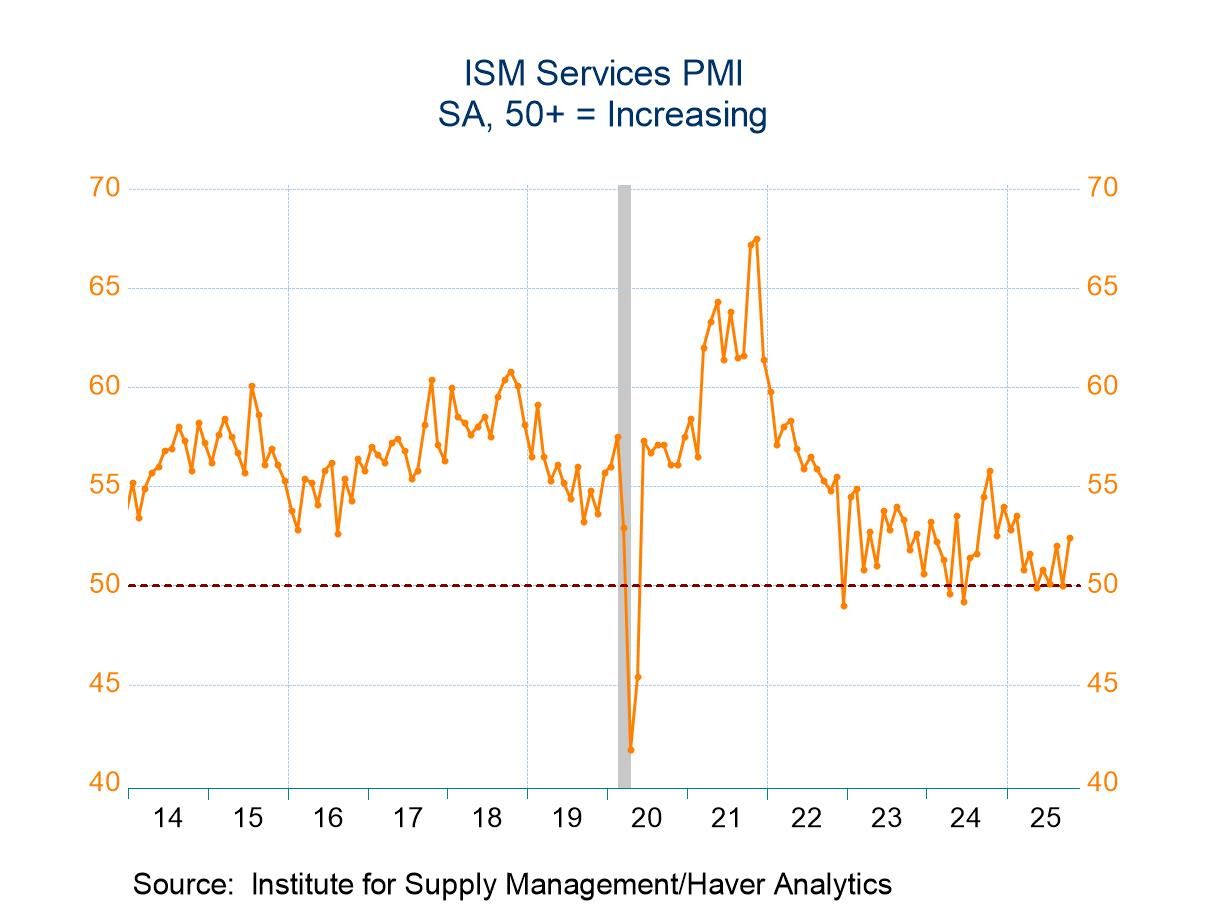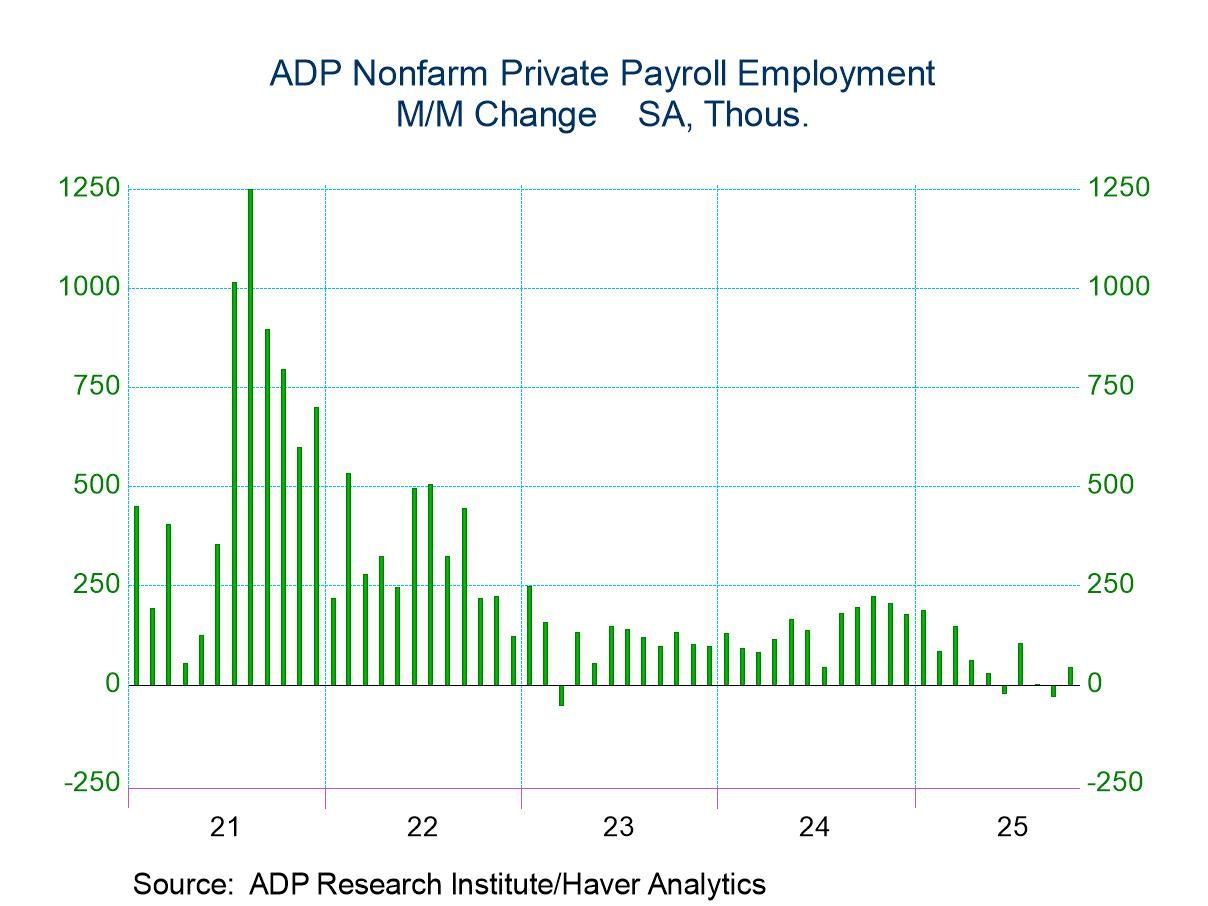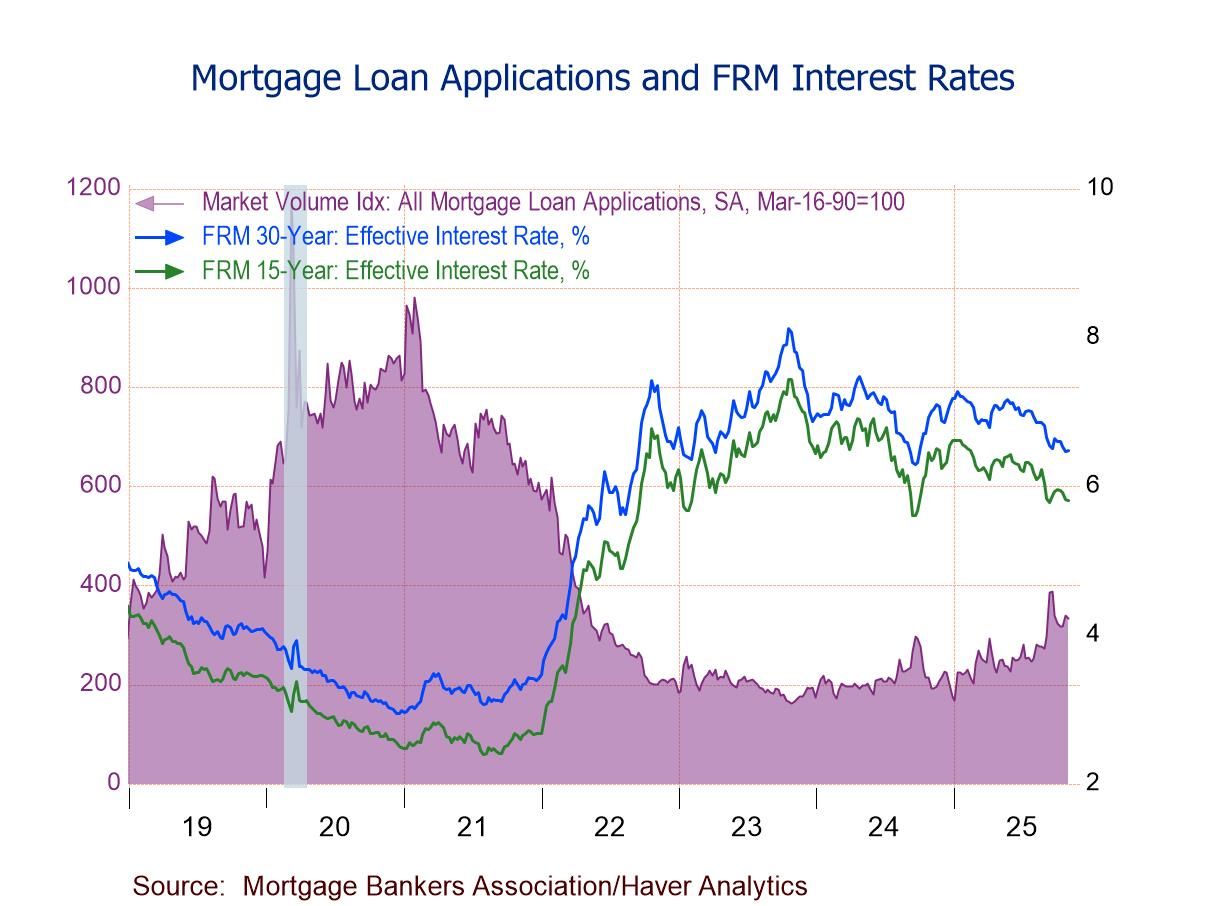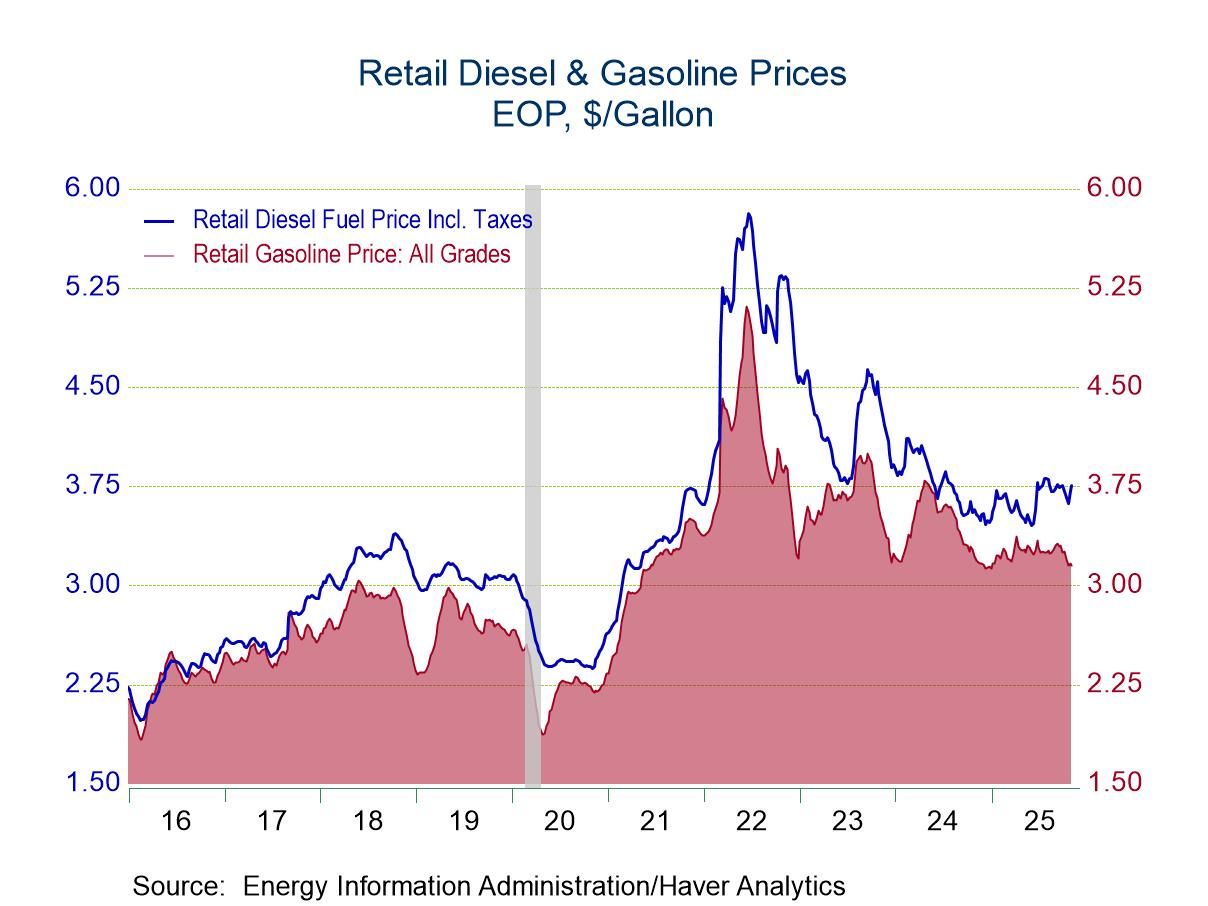 Global| May 30 2019
Global| May 30 2019Japan's Trade Trends Show Some Life But It Is Temporary
Summary
Japan's trade deficit stays in place for the second month in a row although the deficit shrinks to 111 billion yen in April from 154 billion yen in March. Japan's average deficit measured over 12 months, six months and three months [...]
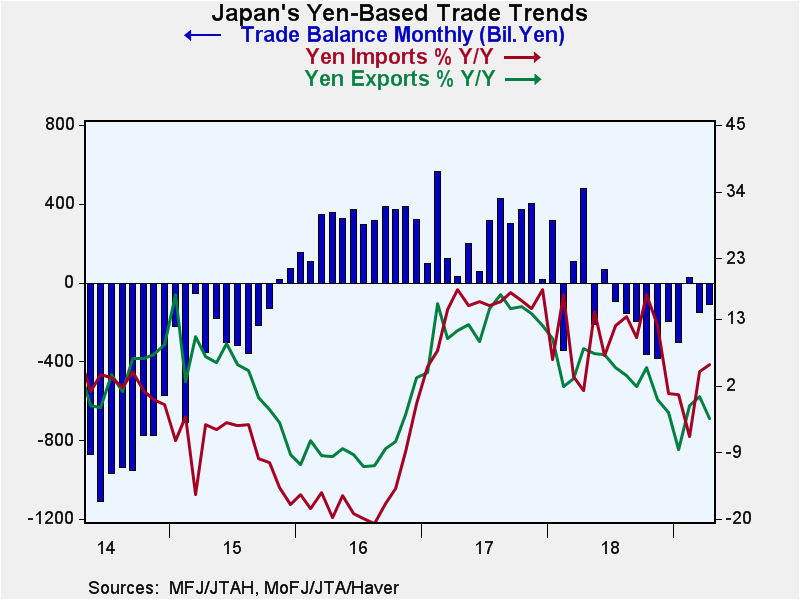 Japan's trade deficit stays in place for the second month in a row although the deficit shrinks to 111 billion yen in April from 154 billion yen in March. Japan's average deficit measured over 12 months, six months and three months has been gradually shrinking.
Japan's trade deficit stays in place for the second month in a row although the deficit shrinks to 111 billion yen in April from 154 billion yen in March. Japan's average deficit measured over 12 months, six months and three months has been gradually shrinking.
Export trends from Japan are largely the reason for this deficit trend as exports have suddenly come to life, logging a 28.9% annual rate gain over the past three months helped by a gain of 0.6% month-to-month in April.
Goods imports are up at a 13.9% annual rate over three months, a strong gain but below that for exports. In April, imports slipped by 0.1% month–to-month.
Sequential growth rates show a series of export and import trends that were decaying, suddenly breaking out with strong gains over three months. However, the year-over-year trends show the opposite. Year-on-year exports are falling by 3.4% while year-on-year imports are up by 5.6%. For imports, that is a step up from their year-on-year growth rate of one year ago. For exports, it's a weaker result.
The average yen level over three months, six months and 12 months has been remarkably stable vs. the dollar. Over the past few months the yen has weakened but only back to its past averages for the year. The real broad multilateral yen rate has also been stable over the past year.
Export and import prices show a lot of variation over the past year. Export prices are rising at a 16.9% annual rate over three months compared to being relatively flat (up by 0.3%) over 12 months. Import prices are up at a 23.6% annual rate over three months reflecting rising oil prices; but they are up by just 2.1% over 12 months. We can combine the nominal trade results with export and import prices to reveal trends in trade volume. These trends show a revival in export volume over three months after a decaying trend was in progress over 12 months and six months. Export volume is up at a 10.2% annual rate over three months. But export volume is still falling by 3.7% over 12 months. Import trends are opposite. Imports are contracting at a 7.8% annual rate over three months but rising by 3.4% over 12 months.
The sequential patterns are simply too difficult to draw conclusions about. But if we look at the growth rates for export volume and import volume over a longer period, real trends emerge This longer look provides a clear trend for both exports and imports measured over any horizon; it shows that trade volume trends are slowing for both exports and imports.
Of course, the United States and Japan have yet to get into any substantial talks about trade. The U.S.-China talks were progressing nicely until China pulled the rug out and now it is trying to portray that as due to some unspecified actions by the U.S. We do not know what really happened but given China's tendency to be very clever it seems to have overplayed its hand in thinking that President Trump was politically damaged at home and needed any trade deal – any deal. China instead has been surprised to find out that the President will not approve a watered down trade deal that does not deliver free and fair trade to U.S. entities. So the China-U.S. trade talks are backed up. Yesterday the U.S. cited China on some new dumping charges. Huawei is being aggressive and attacking the U.S. case against it in court, saying the U.S. has not proved its case against it. Huawei is trying to get out from under U.S. blockage. The U.S.-China trade war is in full swing. Everyone will be caught up in it. For Japan, this is a fight between its two largest trade partners.
Global growth is slowing. Europe shows many examples in its various reports. In the U.S., the regional Federal Reserve Bank indexes haves been showing a slowing. The U.S. fixed income markets are showing new flattening and inversions again on the yield curve. The inverted yield curve in the U.S. portends recession. There are plenty of disturbing signal to take seriously. The winds of change came howling through European elections as well but did more scaring than actual damage. Still, the EU Commission has sent out its warning letters to countries out of compliance with the Maastricht rules. And the U.K. continues to fiddle with its Brexit plan as Scotland toys with the idea of launching another referendum of its own. These hardly are stable times.

Robert Brusca
AuthorMore in Author Profile »Robert A. Brusca is Chief Economist of Fact and Opinion Economics, a consulting firm he founded in Manhattan. He has been an economist on Wall Street for over 25 years. He has visited central banking and large institutional clients in over 30 countries in his career as an economist. Mr. Brusca was a Divisional Research Chief at the Federal Reserve Bank of NY (Chief of the International Financial markets Division), a Fed Watcher at Irving Trust and Chief Economist at Nikko Securities International. He is widely quoted and appears in various media. Mr. Brusca holds an MA and Ph.D. in economics from Michigan State University and a BA in Economics from the University of Michigan. His research pursues his strong interests in non aligned policy economics as well as international economics. FAO Economics’ research targets investors to assist them in making better investment decisions in stocks, bonds and in a variety of international assets. The company does not manage money and has no conflicts in giving economic advice.



